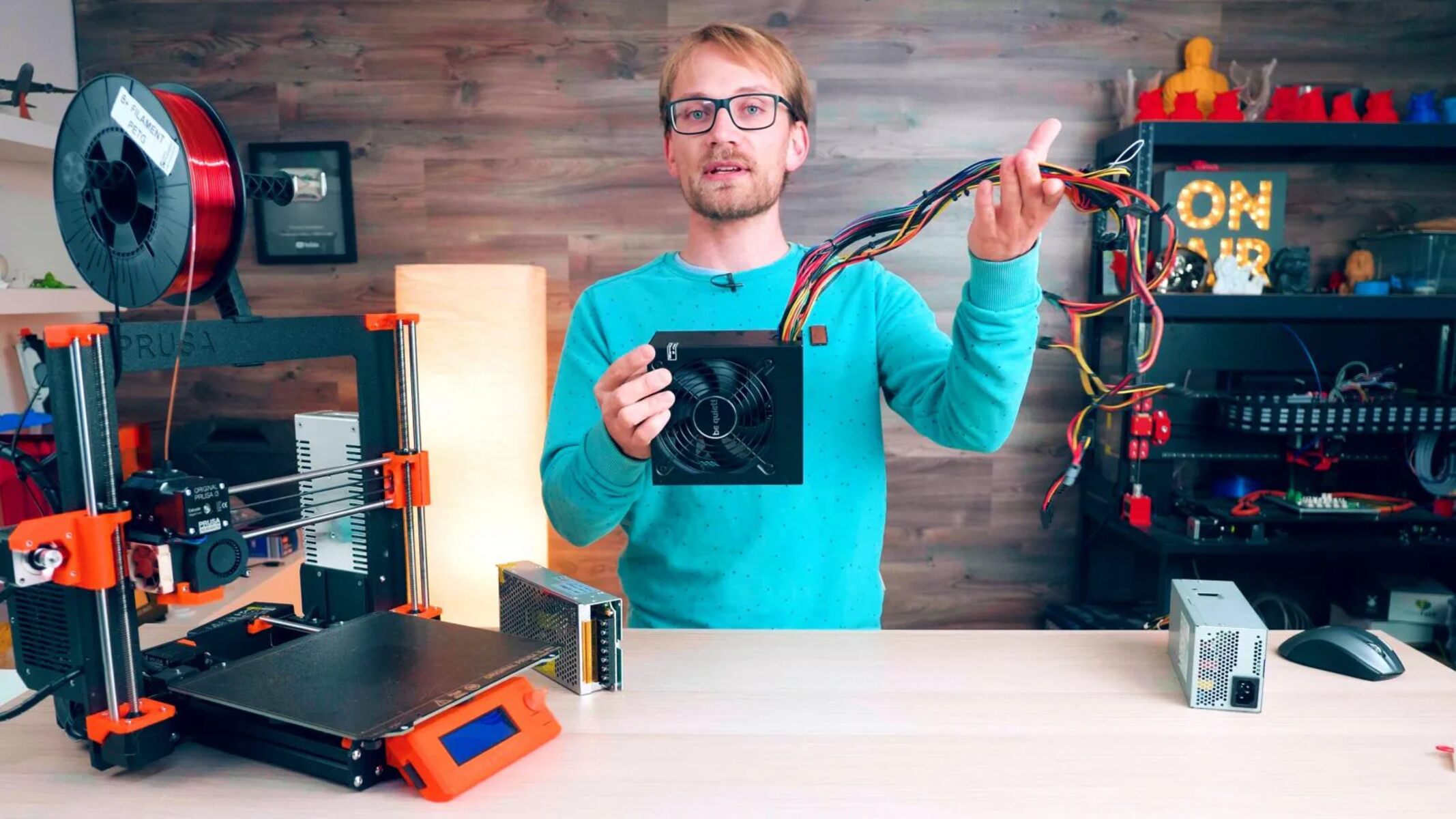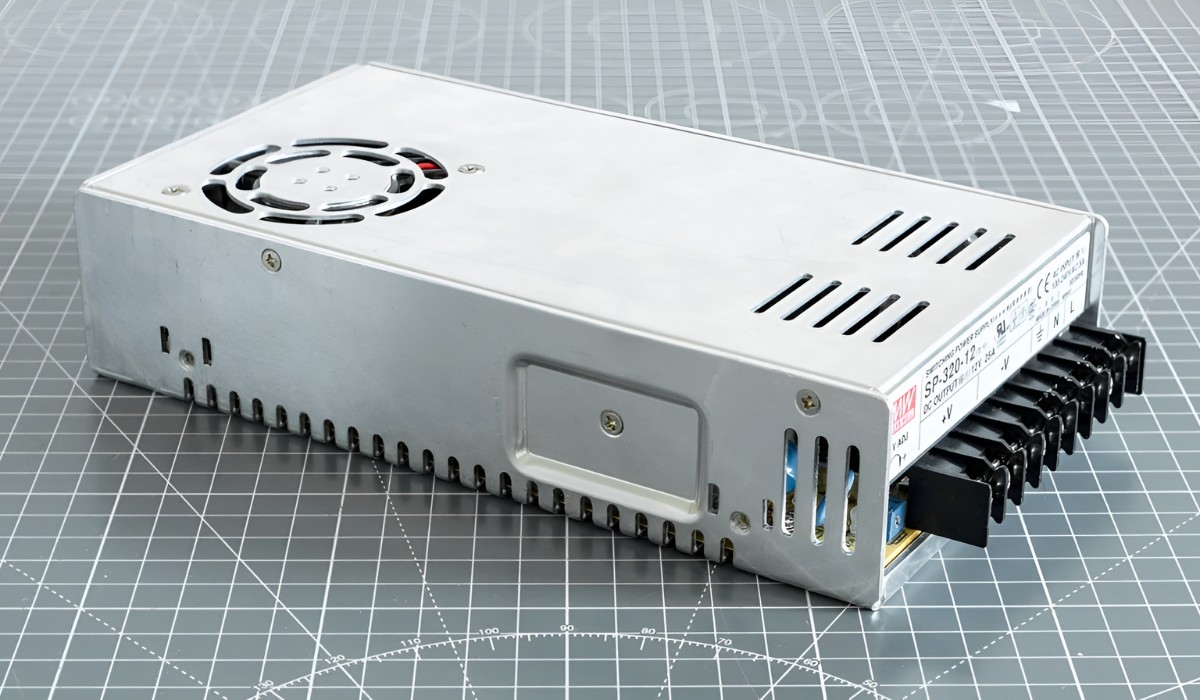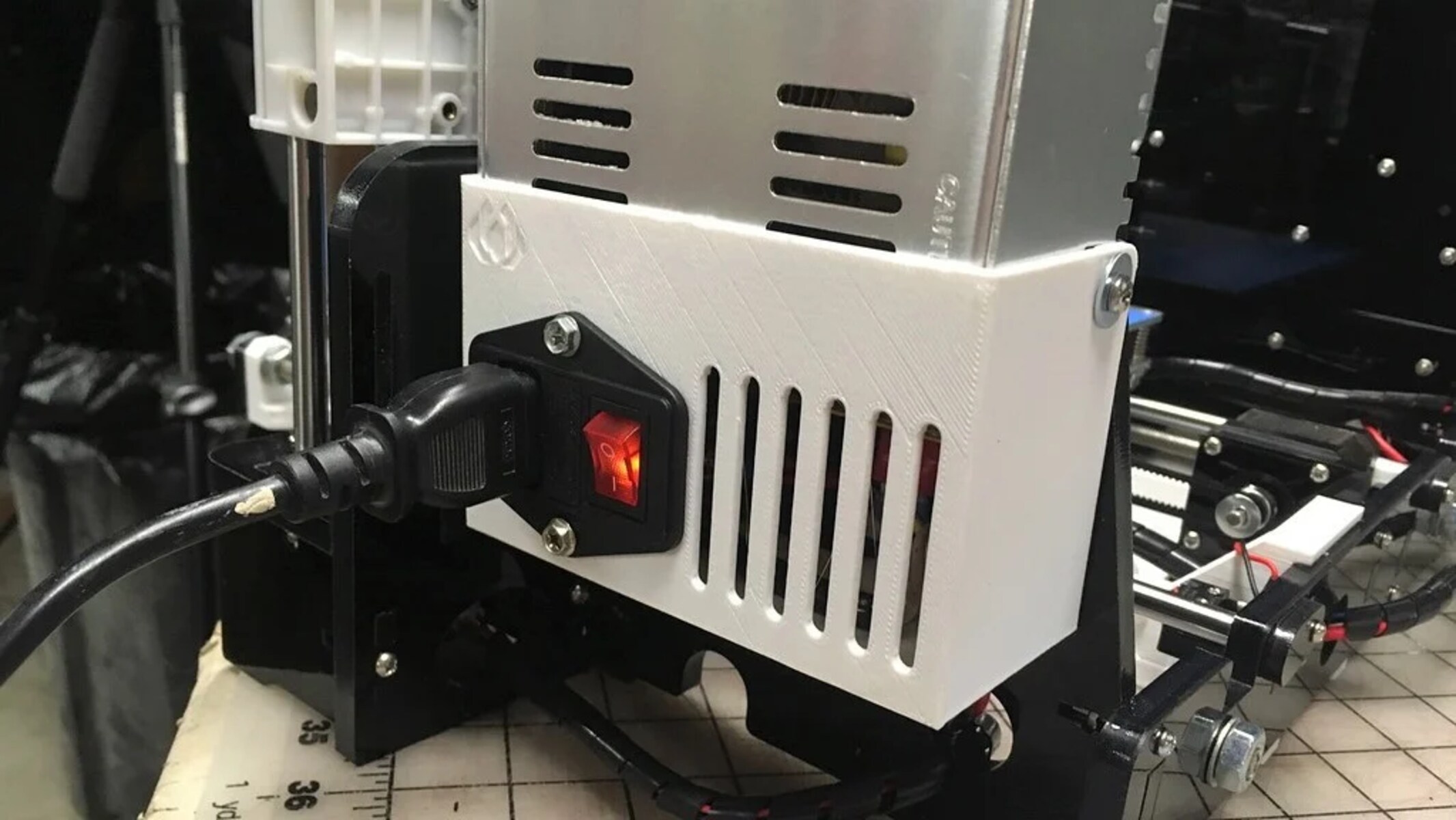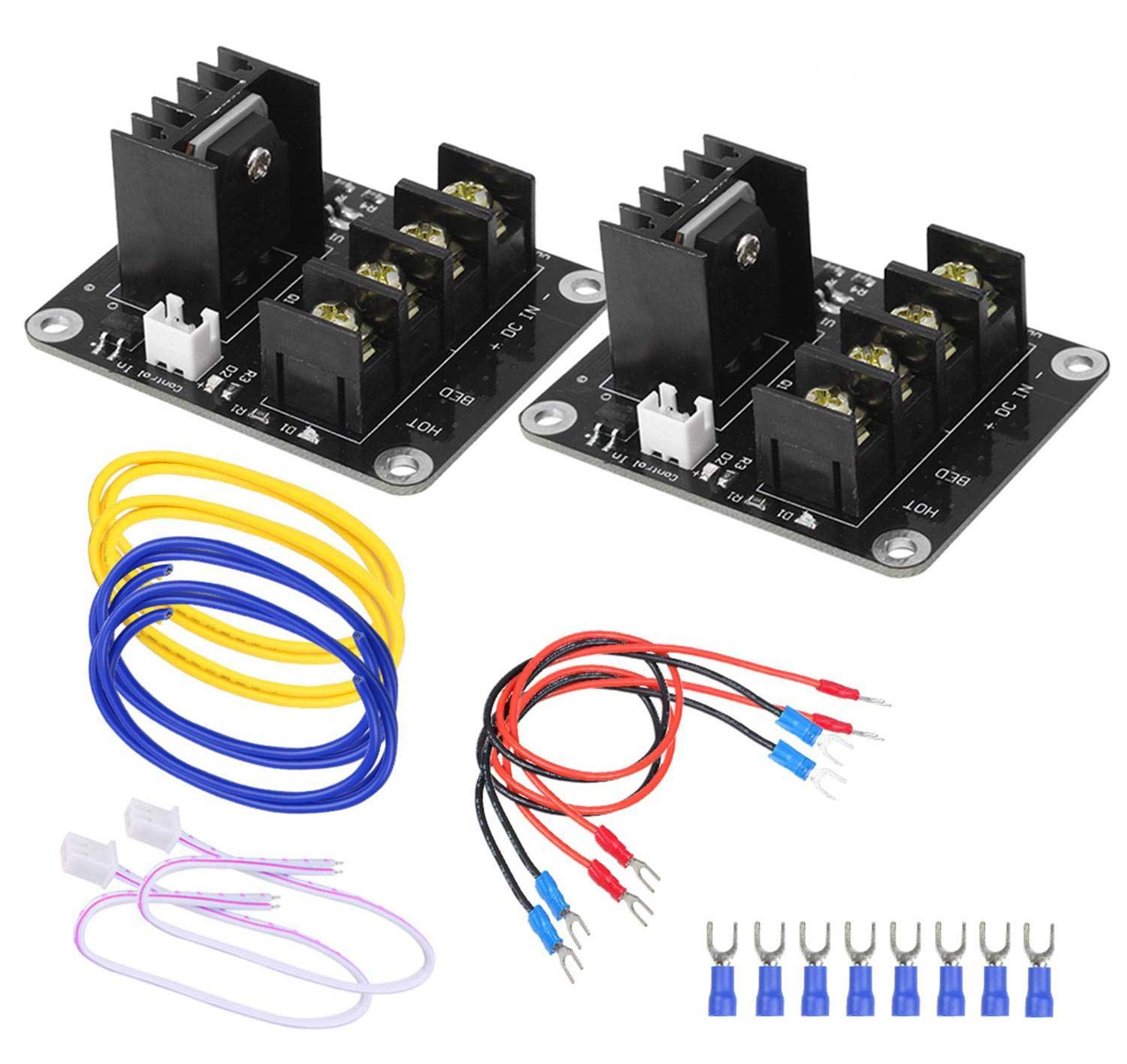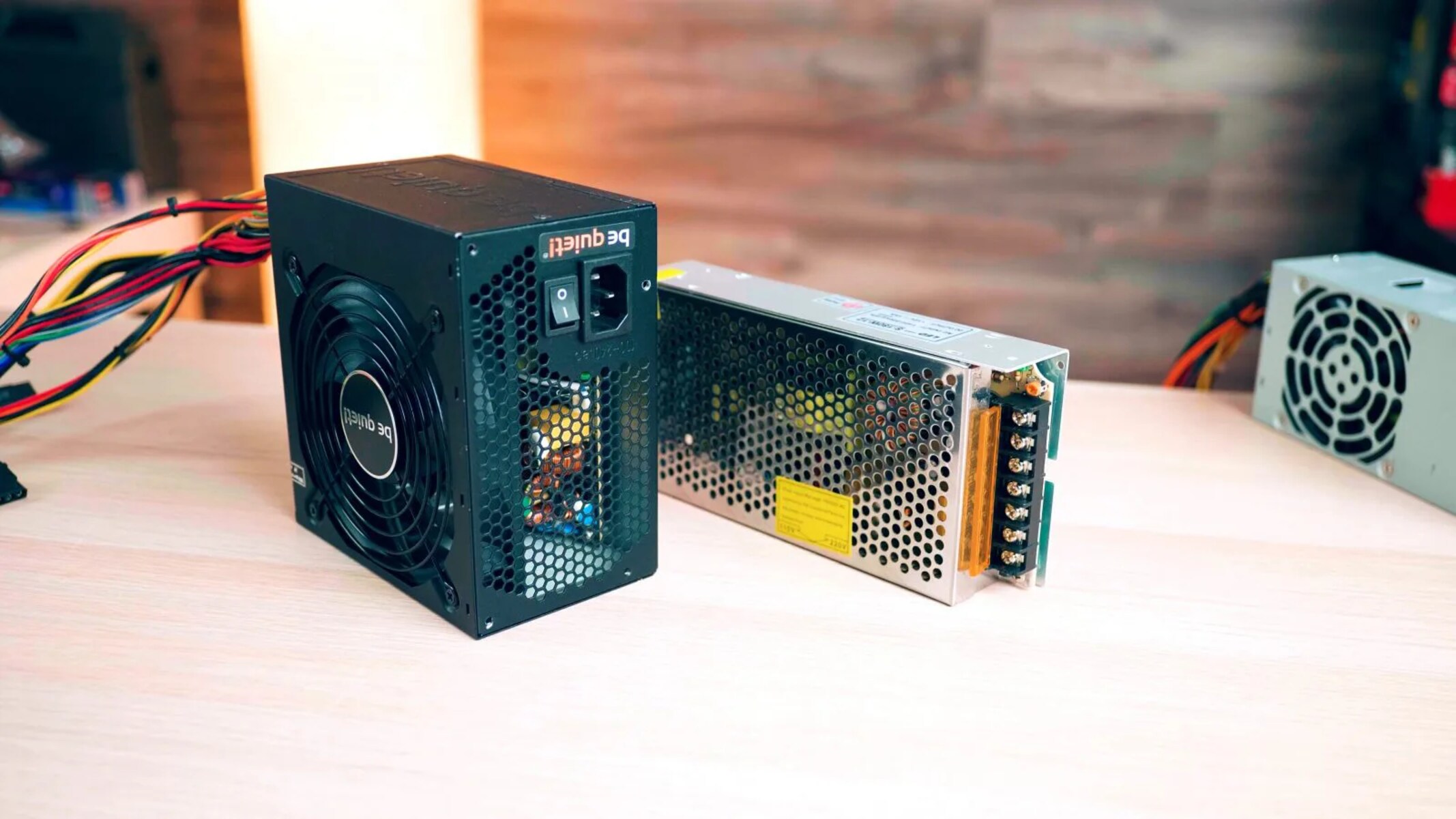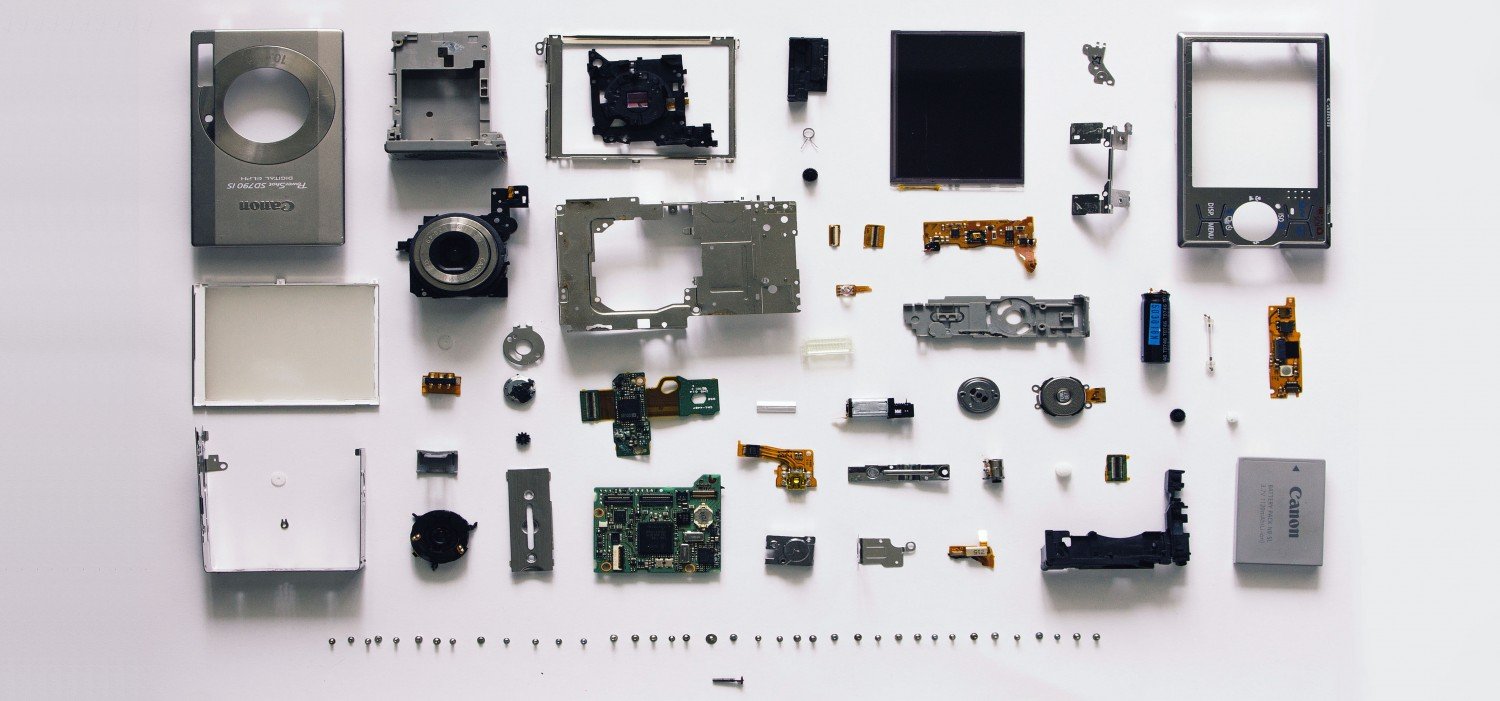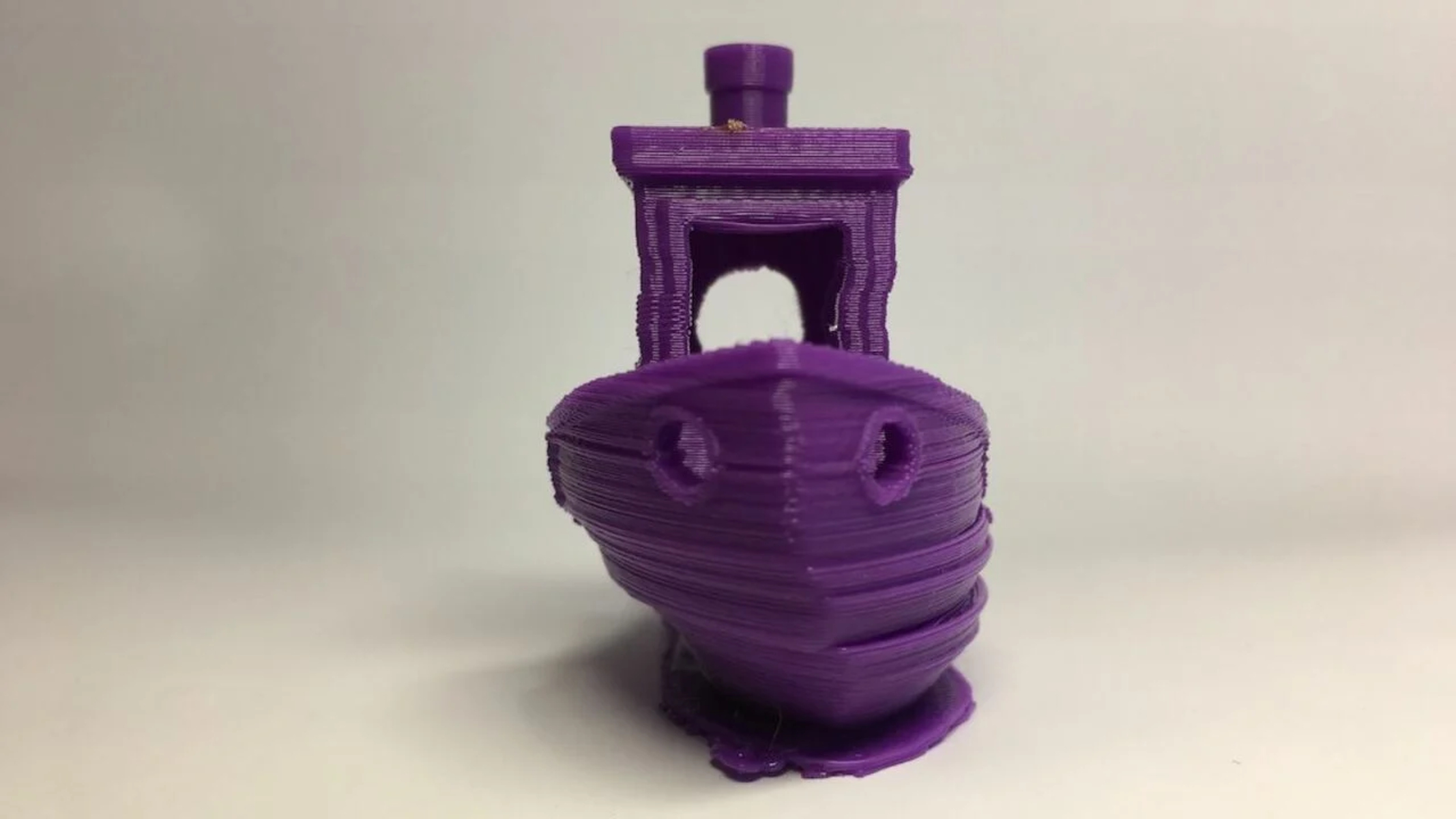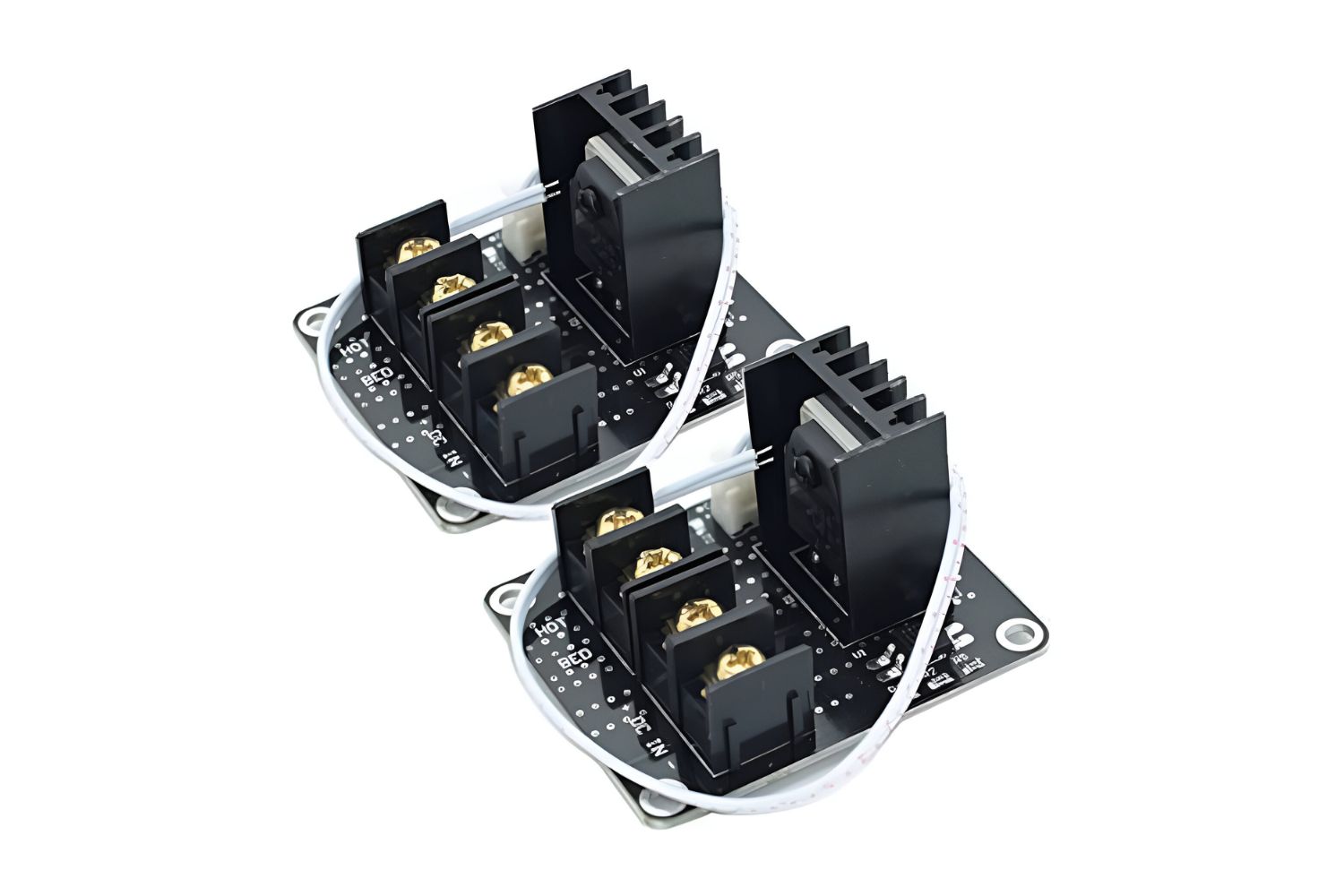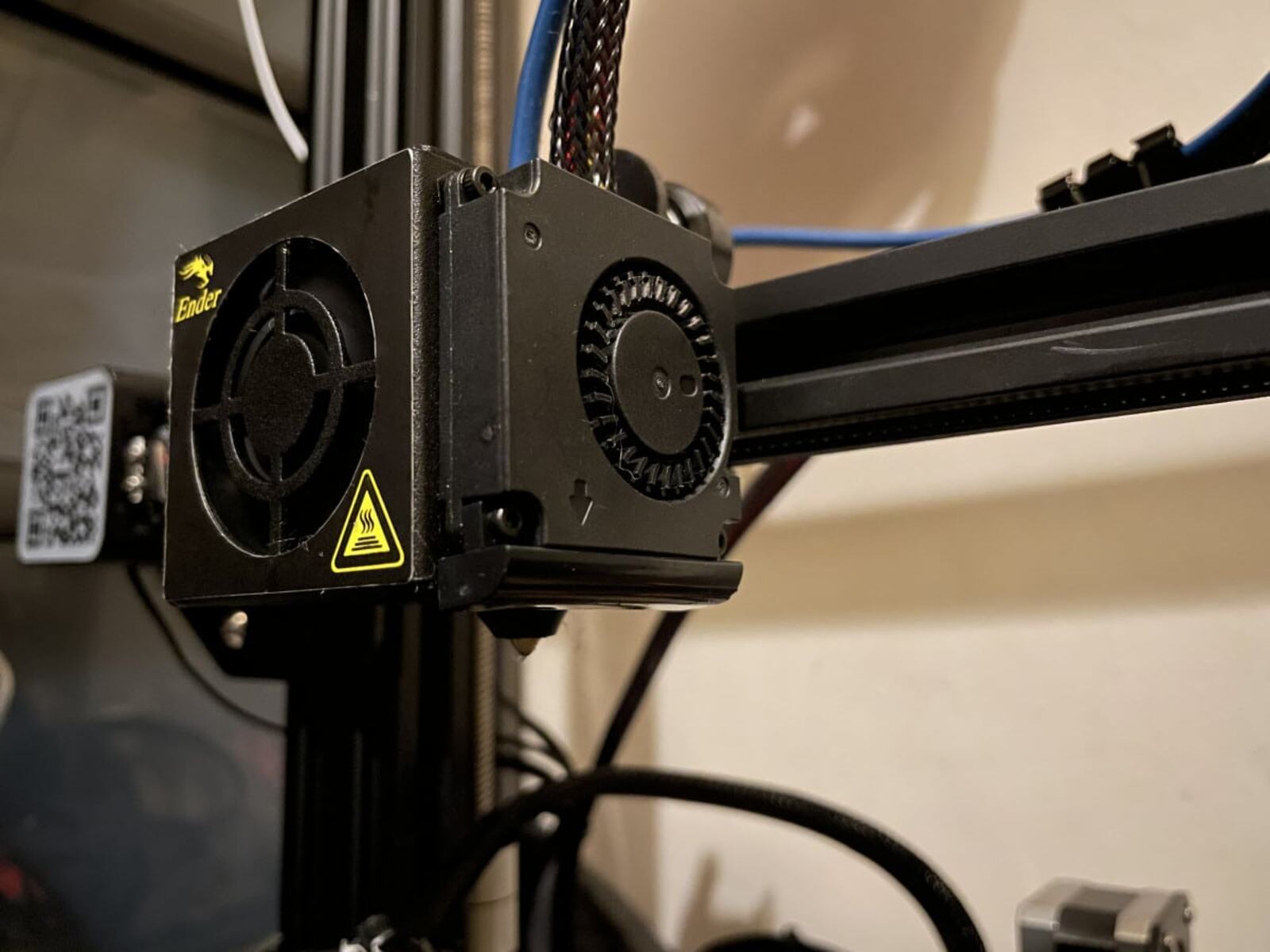Introduction
Welcome to the world of 3D printing! Whether you are a newbie or a seasoned enthusiast, choosing the right power supply for your 3D printer is essential for a successful printing experience. One key consideration when selecting a power supply is the voltage it operates on. Understanding the importance of voltage and the different options available can help you make an informed decision.
Why is voltage important, you may ask? Voltage refers to the electrical potential difference between two points, and it determines the amount of force with which electricity flows through a circuit. In the context of 3D printer power supplies, the voltage plays a vital role in powering various printer components such as the motors, heating elements, and control boards.
There are generally two main voltage options for 3D printer power supplies: 12V and 24V. The choice between these two options depends on several factors, including the specific printer model, components, and desired print speeds.
Let’s explore these voltage options in more detail to understand their pros and cons. But before we do that, it’s important to note that while we will be discussing the advantages and disadvantages of each option, both 12V and 24V power supplies have been widely used in the 3D printing community, and their suitability depends on individual needs and preferences.
Why is the voltage important?
When it comes to 3D printing, voltage plays a crucial role in powering the various components of the printer. Understanding the importance of voltage is essential for ensuring the smooth and efficient operation of your 3D printer.
One of the key reasons why voltage is important is because it determines the amount of power delivered to the printer’s components. Different components, such as motors, heating elements, and control boards, have specific voltage requirements to function optimally. If the voltage supplied to these components is too low, they may not operate at their full capacity, leading to decreased performance and lower quality prints. On the other hand, if the voltage is too high, it can put excess stress on the components, potentially causing them to overheat or even fail.
Another reason why voltage is important is its impact on the print speed. Higher voltage power supplies can provide the necessary energy to drive the motors and move the print head at faster speeds. This can result in reduced print times and increased productivity. However, it’s important to note that increasing the voltage also increases the risk of overheating and may require additional cooling measures for the printer.
Moreover, voltage compatibility is another factor to consider. Different printers and components have specific voltage requirements, and using an incompatible power supply can lead to damage or malfunction. It’s crucial to ensure that the voltage of the power supply matches the requirements of your printer and its components. Refer to the printer’s documentation or consult with the manufacturer to determine the correct voltage for your specific model.
In summary, voltage is an important consideration in 3D printing as it directly affects the power delivery, component performance, print speed, and compatibility of the printer. It is crucial to choose a power supply with the appropriate voltage to ensure optimal performance, longevity, and safety of your 3D printer.
Different voltage options for 3D printer power supplies
When it comes to voltage options for 3D printer power supplies, the two most common choices are 12V and 24V. Let’s take a closer look at each of these options and their implications for your 3D printing setup.
1. 12V power supplies: Many entry-level and consumer-grade 3D printers operate on a 12V power supply. These power supplies are readily available and are often bundled with the printer kit. One advantage of using a 12V power supply is that the components designed for this voltage option are widely available and generally more affordable. However, it’s important to note that 12V power supplies may struggle to provide enough power for printers with larger build volumes or those that require higher temperatures, resulting in slower print speeds.
2. 24V power supplies: In recent years, 24V power supplies have been gaining popularity in the 3D printing community. These power supplies provide higher voltage, which allows for faster heating of the print bed and extruder. Additionally, using a 24V power supply can reduce current draw, thereby minimizing the risk of overheating and extending the lifespan of your electronics. However, it’s worth mentioning that upgrading to a 24V power supply may require replacing some components, such as heating elements and fans, which have specific voltage ratings.
Both 12V and 24V power supplies have their advantages and drawbacks, and the choice ultimately depends on your specific needs and preferences. If you are starting with a smaller printer or have a limited budget, a 12V power supply could be a suitable option. On the other hand, if you have a larger printer or value faster heating and overall efficiency, investing in a 24V power supply might be the way to go.
It’s important to note that the voltage of your power supply should match the voltage requirements of your printer and its components. Using an incompatible voltage can result in malfunction or damage to your printer. Always refer to the manufacturer’s guidelines and specifications to ensure you select the right voltage for your 3D printer.
In summary, the two main voltage options for 3D printer power supplies are 12V and 24V. While 12V power supplies are more common and affordable, they may have limitations in terms of print speed and performance for larger or more demanding printers. 24V power supplies offer faster heating and increased efficiency but may require component upgrades. Consider the specific needs of your printer and consult with the manufacturer’s guidelines to determine the appropriate voltage option for your 3D printing setup.
12V power supplies
12V power supplies are commonly used in many entry-level and consumer-grade 3D printers. These power supplies have several advantages and considerations that are important to understand before making a decision for your 3D printing setup.
One of the primary advantages of using a 12V power supply is that the components designed for this voltage option are widely available and generally more affordable. Many 3D printers come bundled with a 12V power supply, making it convenient for beginners or those on a budget. Additionally, the lower voltage can provide a level of safety by reducing the risk of electrical shock.
However, it’s important to note that 12V power supplies may have limitations, especially for printers with larger build volumes or those that require higher temperatures. These power supplies may struggle to provide enough power for heating the print bed and extruder rapidly, resulting in slower print speeds. Additionally, components such as cooling fans and motors may have to work harder to achieve the desired performance. This can potentially lead to increased wear and tear on the components and may reduce their longevity.
Another consideration when using a 12V power supply is the overall power usage. Since the voltage is lower, more current is required to deliver the same amount of power compared to a higher voltage option. This increased current draw can lead to thicker wires and higher resistance in the electrical system, which may result in voltage drops and decreased performance if not properly managed.
Despite these considerations, 12V power supplies continue to be a popular choice for many 3D printing enthusiasts. They offer a reliable and cost-effective solution for smaller printers and are compatible with a wide range of components and accessories available in the market.
When selecting a 12V power supply for your 3D printer, make sure to check the wattage ratings to ensure it can deliver enough power for your specific printer model and its components. It’s also important to follow proper wiring practices, such as using sufficiently sized wires and ensuring proper cooling for both the power supply and other electrical components.
In summary, 12V power supplies are a common choice for many entry-level 3D printers. They offer affordability and compatibility with various components. However, they may have limitations in terms of print speed and performance for larger or more demanding printers. Understanding these considerations will help you make an informed decision for your 3D printing setup.
24V power supplies
In recent years, 24V power supplies have gained popularity in the 3D printing community due to their increased efficiency and faster heating capabilities. Let’s explore the advantages and considerations of using a 24V power supply for your 3D printer.
One of the main advantages of using a 24V power supply is the ability to achieve faster heating of the print bed and extruder. This higher voltage option allows for more power to be delivered to heating elements, resulting in quicker heating times. Faster bed heating is especially beneficial for printing with materials such as ABS or PETG, which require higher temperatures to prevent warping and improve print quality.
Another advantage of 24V power supplies is their overall efficiency. Higher voltage systems can reduce the overall current draw, which leads to lower energy loss as heat. This can result in a more stable and reliable power supply, minimizing the risk of overheating and extending the lifespan of your electronics.
However, it’s important to note that upgrading to a 24V power supply may require replacing certain components designed for lower voltages. For example, heating elements, fans, and other accessories may need to be carefully selected to match the higher voltage ratings. It’s also crucial to ensure proper wiring practices and cooling measures to manage the increased power demands and dissipate excess heat efficiently.
While 24V power supplies offer increased efficiency and faster heating, they may not be necessary or suitable for every 3D printer setup. Smaller printers with slower print speeds may not experience significant benefits from using a 24V power supply. Additionally, the availability and cost of components designed for 24V may vary compared to those designed for 12V power supplies.
Before upgrading to a 24V power supply, consider the specific requirements of your printer, including its size, print speed, and desired thermal performance. Consult with the manufacturer’s guidelines and community forums to gather insights and recommendations from experienced users.
In summary, 24V power supplies offer improved efficiency and faster heating capabilities compared to their 12V counterparts. They can enhance the overall performance of your 3D printer, especially for larger printers or those requiring higher bed and extruder temperatures. However, it’s important to consider the compatibility of components and the specific needs of your printer before making the decision to upgrade to a 24V power supply.
Pros and cons of using different voltage options
When deciding on the voltage for your 3D printer power supply, it’s essential to weigh the pros and cons of each option. Let’s explore the advantages and considerations of using different voltage options for your 3D printing setup.
12V Power Supplies:
Pros:
- Widely available and generally more affordable.
- Components designed for 12V are widely compatible.
- Lower voltage reduces the risk of electrical shock.
Cons:
- May struggle to provide enough power for larger printers or those requiring higher temperatures.
- Can result in slower print speeds compared to higher voltage options.
- Increased current draw may require thicker wires and proper management to prevent voltage drops.
24V Power Supplies:
Pros:
- Allows for faster heating of the print bed and extruder.
- Increased efficiency reduces energy loss and extends the lifespan of electronics.
- Provides improved thermal performance for larger printers and high-temperature materials.
Cons:
- May require replacing components designed for lower voltages.
- Availability and cost of 24V-specific components may vary compared to those designed for 12V.
- Proper wiring and cooling measures are necessary to manage increased power demands and dissipate excess heat.
Choosing between 12V and 24V power supplies depends on several factors, including the specific requirements of your printer, your budget, and your desired performance. 12V power supplies are commonly used and offer affordability and compatibility. However, they may have limitations for larger printers and can result in slower print speeds.
On the other hand, 24V power supplies provide faster heating, increased efficiency, and improved thermal performance. However, they may require component upgrades and careful consideration of compatibility and wiring practices.
Ultimately, selecting the voltage option for your 3D printer power supply requires consideration of your specific needs and preferences. Consulting with fellow users, researching manufacturer guidelines, and evaluating the capabilities of your printer will help in making an informed decision.
Compatibility with different printers and components
When choosing the voltage for your 3D printer power supply, it’s crucial to consider compatibility with your specific printer model and its components. Ensuring the correct voltage alignment is important to prevent damage, optimize performance, and ensure a successful printing experience. Let’s explore the factors to consider regarding compatibility.
Printer Compatibility:
Every 3D printer has specific voltage requirements outlined by the manufacturer. It’s essential to refer to the printer’s documentation or contact the manufacturer to determine the appropriate voltage for your specific model. Using an incompatible voltage supply can lead to malfunctions, damage to components, or even complete failure of the printer. Pay close attention to the recommended voltage range to ensure compatibility and avoid any potential issues.
Component Compatibility:
In addition to the printer itself, different components of your 3D printer like motors, heating elements, and control boards may have specific voltage requirements. It’s crucial to ensure that the voltage rating of these components matches the voltage supplied by your power supply. Using mismatched voltage ratings can lead to component damage or inconsistencies in performance. Consult the component documentation or the manufacturer’s guidelines to ensure compatibility with your selected power supply voltage.
Upgrade Considerations:
If you wish to switch from a 12V to a 24V power supply or vice versa, it’s important to consider any necessary upgrades or modifications required. Components such as heating elements, fans, and other accessories may need to be replaced with versions designed for the new voltage option. Before making the switch, research the compatibility of these components and plan any necessary upgrades accordingly.
Additional Considerations:
While voltage compatibility is crucial, it’s also essential to consider other aspects of your setup. Take into account the current ratings of your power supply and associated components to ensure they can handle the expected load. Additionally, proper wiring practices and cooling measures should be employed to prevent electrical issues and overheating.
In summary, compatibility with your 3D printer model and its components is a critical consideration when choosing the voltage for your power supply. Ensure that the voltage aligns with the requirements outlined by the manufacturer and be aware of any necessary upgrades or modifications. By ensuring compatibility, you can avoid potential damage, optimize performance, and have a seamless experience with your 3D printer.
Factors to consider when choosing the voltage for your 3D printer power supply
Choosing the appropriate voltage for your 3D printer power supply is an important decision that can impact the performance and functionality of your printer. Consider the following factors to ensure you make an informed choice:
1. Printer model and specifications:
Refer to the manufacturer’s guidelines and specifications for your specific printer model. They will provide information about the recommended voltage range and any specific requirements or limitations. Adhering to these guidelines will ensure compatibility and optimal performance.
2. Component voltage requirements:
Consider the voltage requirements of various components such as motors, heating elements, and control boards. Matching the voltage supplied with the requirements of these components is crucial to prevent damage or malfunctions. Refer to the component documentation or consult with the manufacturer for precise voltage specifications.
3. Power requirements:
Take into account the power requirements of your 3D printer setup. Consider factors such as the print bed size, print speed, and the number of peripherals connected. Higher voltage options, such as 24V, can handle larger power demands more efficiently, but they may require additional upgrades or modifications to ensure compatibility.
4. Print speeds and productivity:
If print speed is a priority, higher voltage options may be more suitable. Higher voltage power supplies can provide more power to the motors, allowing for faster movement of the print head and overall faster print times. However, it’s important to ensure that other components can handle the increased voltage and resulting heat dissipation.
5. Budget and availability:
Consider your budget constraints and the availability of power supplies and components in your desired voltage range. 12V power supplies and components are often more common and affordable, making them an attractive option for those on a tight budget. 24V options may be slightly more expensive and have a smaller selection of compatible components.
6. Upgrade considerations:
If you’re considering switching between voltage options, be aware of any necessary upgrades or modifications required to ensure compatibility. Components designed for 12V may not be suitable for 24V and vice versa. Plan for these upgrades in terms of cost and time needed for installation.
7. Safety and electrical considerations:
Ensure that the voltage you choose aligns with safety regulations and electrical standards. Follow proper wiring practices, use appropriate wire gauge, and implement proper cooling measures to mitigate the risk of electrical issues and overheating.
By considering these factors, you can make an informed decision about the voltage option that best suits your 3D printer setup. Ultimately, the choice will depend on your specific requirements, desired performance, and budget limitations.
Conclusion
Choosing the right voltage for your 3D printer power supply is a crucial decision that can significantly impact the performance, compatibility, and overall success of your printing projects. Understanding the importance of voltage and considering various factors can help you make an informed choice that aligns with your specific needs and preferences.
When considering different voltage options, such as 12V and 24V, it’s important to weigh the pros and cons of each. 12V power supplies are widely available, affordable, and compatible with many components. However, they may have limitations in terms of power delivery, print speed, and compatibility with larger printers or those requiring higher temperatures.
On the other hand, 24V power supplies offer faster heating, increased efficiency, and improved thermal performance. They are especially beneficial for larger printers and high-temperature materials. However, they may require component upgrades and careful consideration of compatibility and cooling measures.
Compatibility with your specific printer model and its components is paramount. Ensure that the voltage you choose aligns with the manufacturer’s guidelines and meets the specific requirements of your printer. This will help prevent damage, optimize performance, and ensure a seamless printing experience.
Other factors to consider include overall power requirements, print speeds, budget limitations, and any necessary upgrades. By carefully considering these factors and consulting with the manufacturer or fellow users, you can make a well-informed decision that suits your unique needs and goals.
Remember to prioritize safety and follow proper wiring practices when implementing your chosen voltage option. This will help prevent electrical issues and ensure a stable and reliable power supply for your 3D printer.
In conclusion, selecting the right voltage for your 3D printer power supply is a critical step in optimizing performance, ensuring compatibility, and achieving successful prints. By considering the factors outlined in this article, you can confidently choose the voltage option that best suits your specific requirements and enjoy a fulfilling 3D printing experience.







